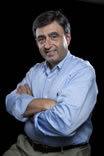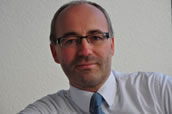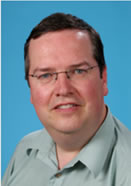Keynote Presenters
Ultrashort Lasers to Increase Efficiency in Solar Energy Harvesting via Intermediate States
Bio: Eric Mazur is an internationally recognized scientist and researcher, he leads a vigorous research program in optical physics and supervises one of the largest research groups in the Physics Department at Harvard University. Eric Mazur has made important contributions to the interaction of ultrashort laser pulses with materials, nanophotonics and Physics Education, with 256 scientific publications and 12 patents. He founded Learning Catalytics, a company that uses data analytics to improve learning in the classroom, and SiOnyx, a company that is commercializing black silicon, a new form of silicon developed in Mazur's laboratory. In 2010 he was elected Director at Large for the Optical Society of America. He is currently the Balkanski Professor of Physics and Applied Physics and Area Dean of Applied Physics at Harvard University.
Abstract: Shining intense, ultrashort laser pulses on the surface of a crystalline silicon wafer drastically changes the optical, material and electronic properties of the wafer. The process has two effects: it structures the surface and incorporate dopants into the sample to a concentration highly exceeding the equilibrium solubility limit. This femtosecond laser "hyperdoping technique" enables the fabrication of defect- and bandgap engineered semiconductors, and laser texturing further enhances the optical density through excellent light trapping. Hyperdoped silicon opens the door for novel photodectors and for Earth-abundant, semiconductor-based solar energy harvesters with the potential for both low cost and high photoconversion efficiency. The same technique can be used to form nanostructured and doped TiO2 and non-stoichiometric TiN films. We show that oxygen, nitrogen, and chromium incorporation occurs in these films when the laser fluence exceeds the ablation threshold. Our research offers an innovative approach to alter the surface and structure of TiO2 to generate new materials with applications in visible-light watersplitting.
Review on laser-induced plasma spectroscopy: From basic science to industrial applications Bio: Johannes D. Pedarnig received his PhD degree in Physics from the Ludwig Maximilians University in Munich / Germany in 1995 (PhD supervisor T.W. Hänsch). He is assoc. Professor of Applied Physics at the Johannes Kepler University Linz (Austria), where his group conducts research on laser-matter interaction, laser-assisted diagnostics of multi-component materials, and growth and nanopatterning of oxide thin films. He is expert in pulsed-laser deposition and laser-induced breakdown spectroscopy and has (co)-authored more than 120 scientific publications. He has co-organized several international scientific conferences and workshops. Since 2006 he is director of a Christian Doppler research laboratory in cooperation with industry.
Abstract: High power laser ablation generates plasma that is a source of intense optical radiation. Spectroscopic analysis of the optical emission determines the species and their concentrations in plasma and yields quantitative information on the chemical composition of the material under investigation. This laser-induced plasma spectroscopy (laser-induced breakdown spectroscopy, LIBS) is an upcoming technique for multi-element analysis of complex materials. Almost any kind of solid, liquid, and gaseous substance can be measured. In this contribution we give an overview on the basic physical properties of laser induced plasma. The optical emission intensity of the chemical elements is estimated assuming ideal plasma. Due to its versatility LIBS is employed in a broad range of applications and for many different classes of materials. We present some examples of LIBS based sensors that are operating under harsh conditions, for instance on-site / in-line in industrial production processes (e.g., metallurgy, secondary materials).
CLEANSPACE - Space Debris Removal by Ground Based Laser: Progress of the European Project
Bio: Dr. Esmiller received his degree in 1993, PhD in Mechanics, from the Institute of Fluid Mechanics In Marseille (PHD director Michel Autric) University Aix/Marseille II (France) with a focus on characterization of plasma induced by pulsed laser on solid materials. From 1993 to 2005 his experience includes : EADS Innovation Works (Research Centre) development of different laser applications for industrial aeronautic and space domain: laser welding, laser surface treatment (depainting, surface treatment before bonding, …), laser shock hardening, drilling, and cutting. From 2005-2008 his experience included: EADS Innovation Works Program manager of Optronic & Photonic activities. From 2009- now he has been working as the EADS Astrium Program Manager on laser systems for Space Surveillance (fine tracking of space object by Satellite laser ranging), Laser space debris removal.
Abstract. Studies show that the number of debris in Low Earth Orbit is exponentially growing despite future debris release mitigation measures considered. Especially, the already existing population of small and medium debris (between 1 cm and several dozens of cm) is today a concrete threat to operational satellites. Ground based laser solution which can remove at low expense and in a non-destructive way hazardous debris around selected space assets appears as one highly promising answer. This solution is studied in the frame of CLEANSPACE project which is a part of the FP7 space theme. Overall CLEANSPACE objective is threefold: to propose an efficient and affordable global system architecture, to tackle safety regulation aspects, political implications and future collaborations, to develop affordable technological bricks and to establish roadmap for the development and the future implantation of a fully functional laser protection system. This paper will present the progress of the CLEANSPACE project.
Advanced, Diode-Pumped, High Average Power Lasers for Orbital Debris Removal and Other Applications
Prof. David Neely is based at the Central Laser Facility in Oxfordshire in the UK and currently holds a Science and Technology Facilities Council Individual Merit Fellowship (awarded 2010) and is a Visiting Professor at the University of Strathclyde, Glasgow. Over the last 3 years, he was High Power Laser Division head of the STFC Central Laser Facility, overseeing experimental, targetry and plasma diagnostic developments related to the Vulcan PW and Astra Gemini facilities. His publications include 30 Physical Review Letters and over 150 additional papers. He has also held the Abe Visiting Chair at PMRC, JAEA, Japan (2008-2011). His current research interests are in laser driven ion sources with applications from the medical field to laser driven fusion studies. With the development of multi Hz diode pumped lasers his recent research has also been exploring the potential for laser driven secondary sources of X-rays, neutrons and GeV electron beams.
Abstract: Significant advances have been made over the last decade to improve the performance and efficiency of high peak and average power solid state laser systems, driven by their use in a wide variety of fields, from the industrial to the scientific. Projects such as the National Ignition Facility which delivers multi MJ pulses of sub 40ns duration a few times per day using flash lamp pumping have shown the benefits of highly modular designs. In the European Union, projects to develop 100J, diode pumped 10Hz class laser drivers have attracted significant efforts. Latest results from the Central Laser Facility will be presented. The benefits in terms of reduced operating cost and reliability of employing such lasers in a modular hierarchy to drive a system, capable of orbital debris removal will be discussed. Options of utilising modulated laser pulses to increase to laser to momentum conversion efficiency will also be reviewed.
|
||




